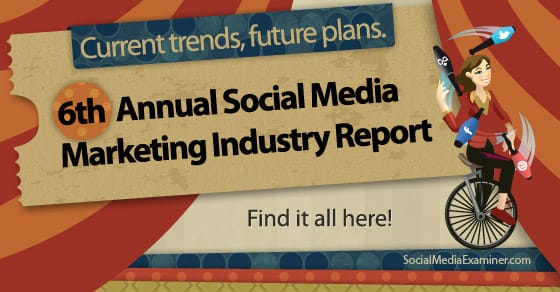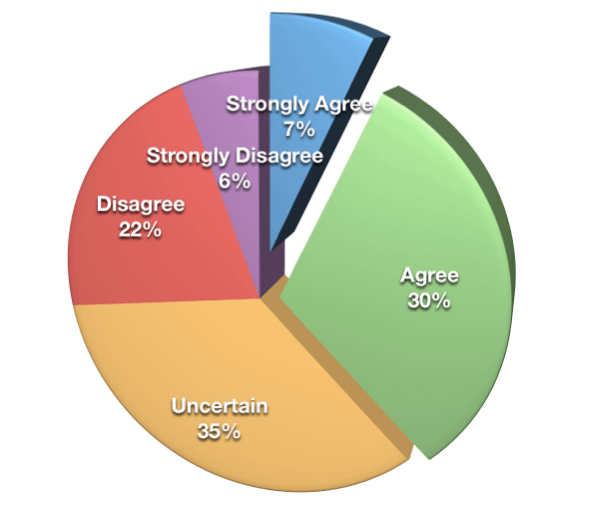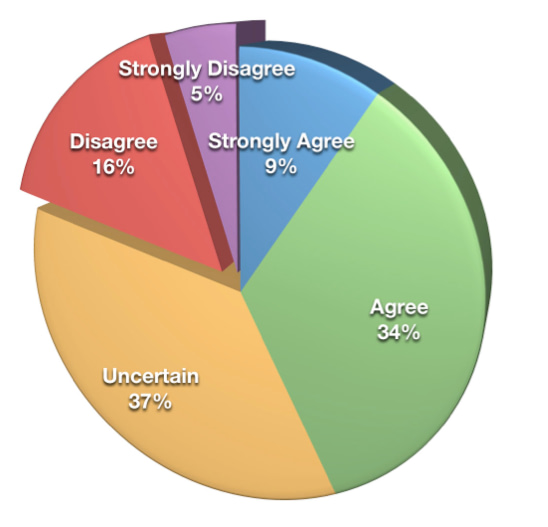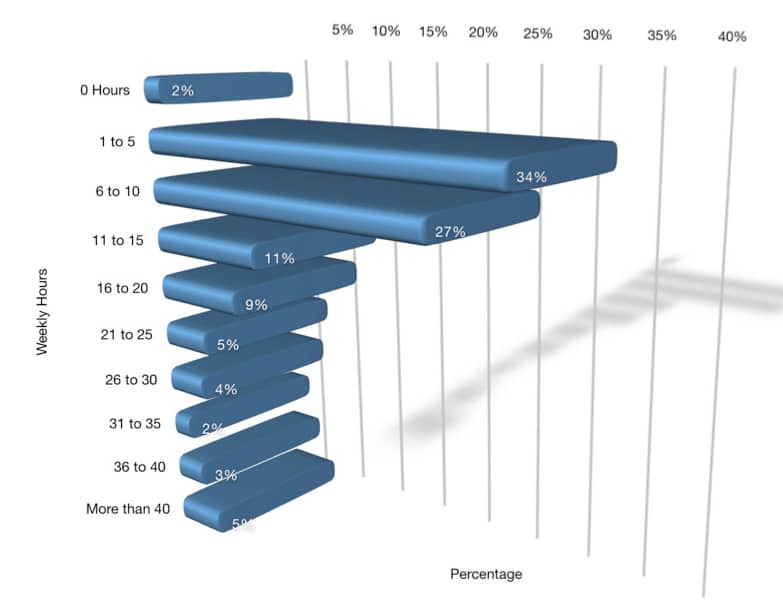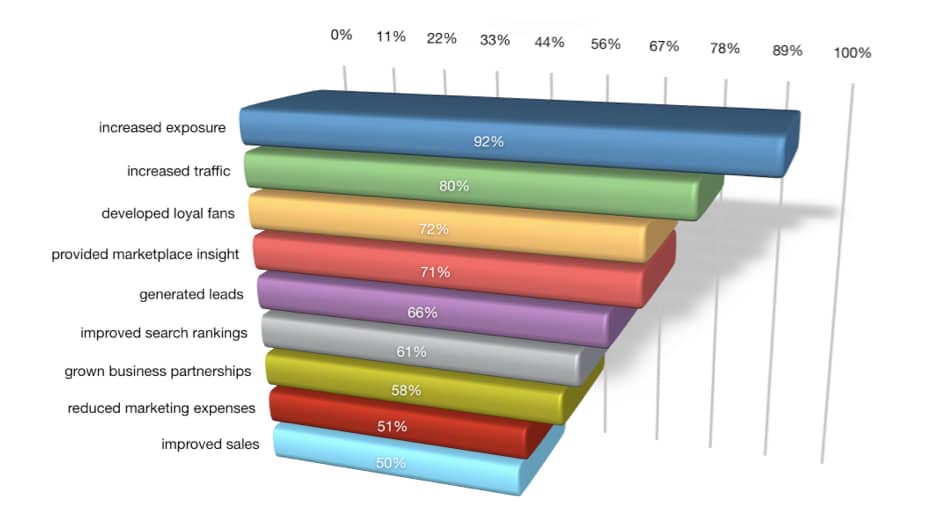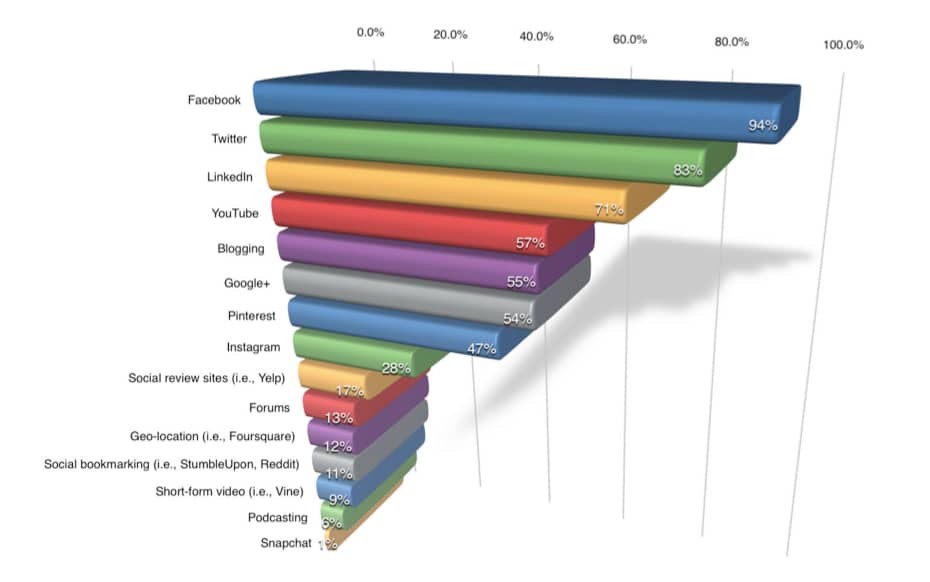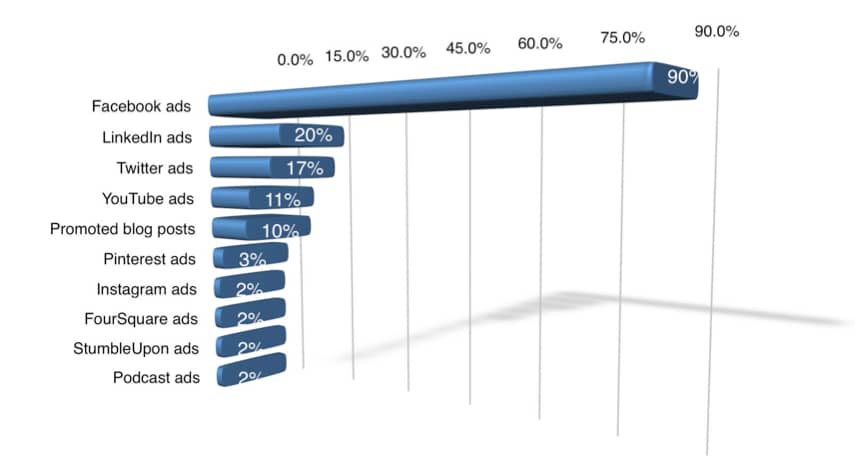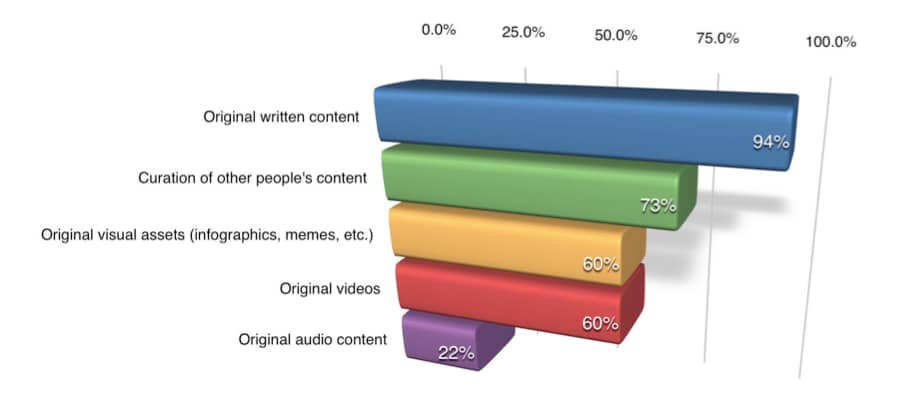According to Social Media Examiner’s 2014 Social Media Marketing Industry Report, a whopping 92% of marketers are indicating that social media is important for their business. More than ever before, marketers are using social media to drive traffic, engagement and sales, and to develop and nurture customer loyalty.
This post will look at the most significant findings from this recent industry report to determine how marketers are using social media in 2014; and perhaps even more importantly, where they’re planning to increase their investment in 2015.
Marketers are still struggling to measure ROI for their social media efforts.
This will come as no surprise to business owners who have used social media in any capacity: calculating ROI for social media marketing continues to be a significant challenge. Responding to the statement, “I am able to measure the return on investment (ROI) for my social media activities”, only 7% stated that they strongly agreed, while a further 30% stated that they agreed.
Recent research by Gigaom Research supports these findings: in fact, their survey of 300 US digital marketers revealed 52% of respondents found it difficult to measure social media ROI.
There are many challenges when it comes to measuring ROI, however in many cases, the biggest roadblock is simply the failure to properly track existing analytics. Metrics like website traffic and resulting conversion rates are one of the most reliable measures of ROI; ‘soft’ metrics like customer loyalty or even the number of fans or followers can be more difficult to translate into ROI.
The Social Media Examiner report points out a disconnect between analytics and ROI: the survey asked marketers whether they regularly analyzed their social media activities, and 68% reported that they did. So while marketers seem to understand the importance of analyzing their efforts, their analysis is still coming up short when it comes to determining ROI.
Most marketers are struggling with effectively using Facebook.
When asked whether marketers believed whether their Facebook marketing was effective, only 43% responded in the affirmative. This number was higher (52%) among larger companies (those with 1000+ employees), and lower (34%) among small business owners.
Although the report doesn’t indicate the reasons why marketers are struggling, aligning Facebook with existing business goals may be one of the challenges. While most business owners know they need to be active on Facebook, understanding how to use the platform strategically – to drive traffic and sales – continues to allude many.
Most marketers are using social media at least 6 hours per week.
According to the survey, 64% of marketers are using social media for 6+ hours per week; perhaps most surprisingly, however, is the fact that 19% use social media for 20+ hours. Bottom line: If you’re expecting to prosper from social media, make a commitment to use it for at least 6 hours per week.
Not surprisingly, many business owners struggle with allocating the necessary resources to social media. For solopreneurs, committing 6+ hours per week to social media is often just not feasible. In these cases, outsourcing social media tasks may be necessary in order to remain competitive. Many business owners are finding the only way they can afford this is to re-allocate funds earmarked for traditional marketing methods to inbound marketing methods.
Only 50% of business owners report increased sales as a benefit of social media marketing.
Although revenue-generating tasks should be a priority for business owners, half of marketers are reporting that social media doesn’t result in increased sales. In fact, increased sales came in 9th in terms of benefits from social media marketing. The top 5 benefits that marketers reported included increased exposure (92%), increased traffic (80%), nurturing fan loyalty (72%), providing marketplace insight (71%) and generating leads (66%).
This doesn’t mean, however, that businesses shouldn’t expect long term profit from their social media efforts. We’ve already determined that calculating ROI can be difficult, but this doesn’t mean social media isn’t profitable. Business owners should be channeling their social media followers into their online marketing funnel, and nurturing these relationships over time. So while it may be difficult to draw a direct connection between social media and sales, when done right, social media tasks should ultimately lead to increased revenue.
The report points out that marketers who have used social media for more than 3 years, as well as those who use it for more than 6 hours per week, find that social media has helped them increase sales. In fact, 74% of those who use social media 40+ hours per week report increased sales; definitely an investment that pays off.
Facebook is still the clear winner in terms of business use.
Despite the growing popularity of image and video-based networks like Pinterest, Instagram and Vine, Facebook still takes a clear lead when it comes to the most commonly used platforms. With 94% of marketers using Facebook, the platform shows no signs of slowing down – at least for now (more on this later).
There is some variation, however, between the value B2B and B2C marketers place on the platform: Among B2C marketers, 68% report it as their most important social network, while only 31% of B2B businesses rank it as #1. Not surprisingly B2B businesses place more value on LinkedIn, and in fact report it as their top network (33%).
Other commonly used platforms are Twitter (83%), LinkedIn (71%) and YouTube (57%). Surprisingly, despite many SEO experts declaring this the year of Google+, the platform is still only being used by 54% of marketers.
While most networks showed a slight increase since 2013, blogging fell slightly from 58% to 55%, and Instagram grew fairly substantially – from 18%-28%.
Where are marketers going to increase efforts this year?
Looking at current trends is useful, but sometimes looking at what’s ahead can help us better prepare to remain competitive. According to the report, marketers are planning to increase their investment in certain areas, including blogging (68%), YouTube (67%), Twitter (67%), LinkedIn (64%) and Facebook (64%).
The fact that blogging tops the list isn’t a big surprise: with blog content being the primary driver of traffic from social media, an investment in blogging often must precede an investment in social networking. It’s interesting to note that B2B marketers are more likely (74%) to report this increased investment in blogging than B2C marketers (63%).
It’s also interesting to note that for the first time since 2011, YouTube dropped from the #1 position, and that for the first time, plans to invest in Facebook actually fell. 7% of marketers reported decreasing their use of Facebook…are we beginning to witness the decline of Facebook for business?
Perhaps the biggest ‘loser’ in terms of social media usage for the upcoming year is Snapchat: despite the rise of visually-based content, 85% of marketers have no plans to use Snapchat this year, and only 7% plan to increase their usage of the platform.
Facebook still wins for paid ads
When asked which forms of paid social media ads marketers use, Facebook ads emerged as the clear winner. 90% of marketers said they invest in Facebook ads, compared to 20% for LinkedIn ads and only 17% for Twitter ads. B2C marketers showed greater preference for Facebook ads (94%) than B2B marketers (82%).
Original written content is still the most used type of content
There has been a lot of discussion among marketers about curated content in the past year, however original written content still dominates in terms of what businesses are sharing. 94% of marketers report using this type of content, as compared to 73% using curated content, 60% using original visual assets like infographics and memes and 60% using original videos.
Just over half (58%) of respondents also reported that original written content was their most important type of content, not just their most used. This was true for both B2B and B2C marketers, although B2B marketers found it more important (65%) than B2C (52%).
Looking ahead, 81% of marketers say they plan to increase their usage of original written content in the future; and a whopping 73% plan to increase their use of original videos.
Final Thoughts
Knowing how marketers are using social media, as well as where they plan to make additional investments in the future gives business owners a good sense of where they fit and what changes they should consider making. For instance, knowing that a significant number of marketers plan to invest in blogging and YouTube may impact your own strategies and budget for the upcoming year.
Keep in mind, however, that just because a majority of marketers are doing something, doesn’t necessarily mean it’s right for you or your business. Your audience and business are unique, and it’s important that you test what works best for you and for your customers.
Where are you planning to increase spending over the coming year? Where are you planning to decrease your investment? Share below!


